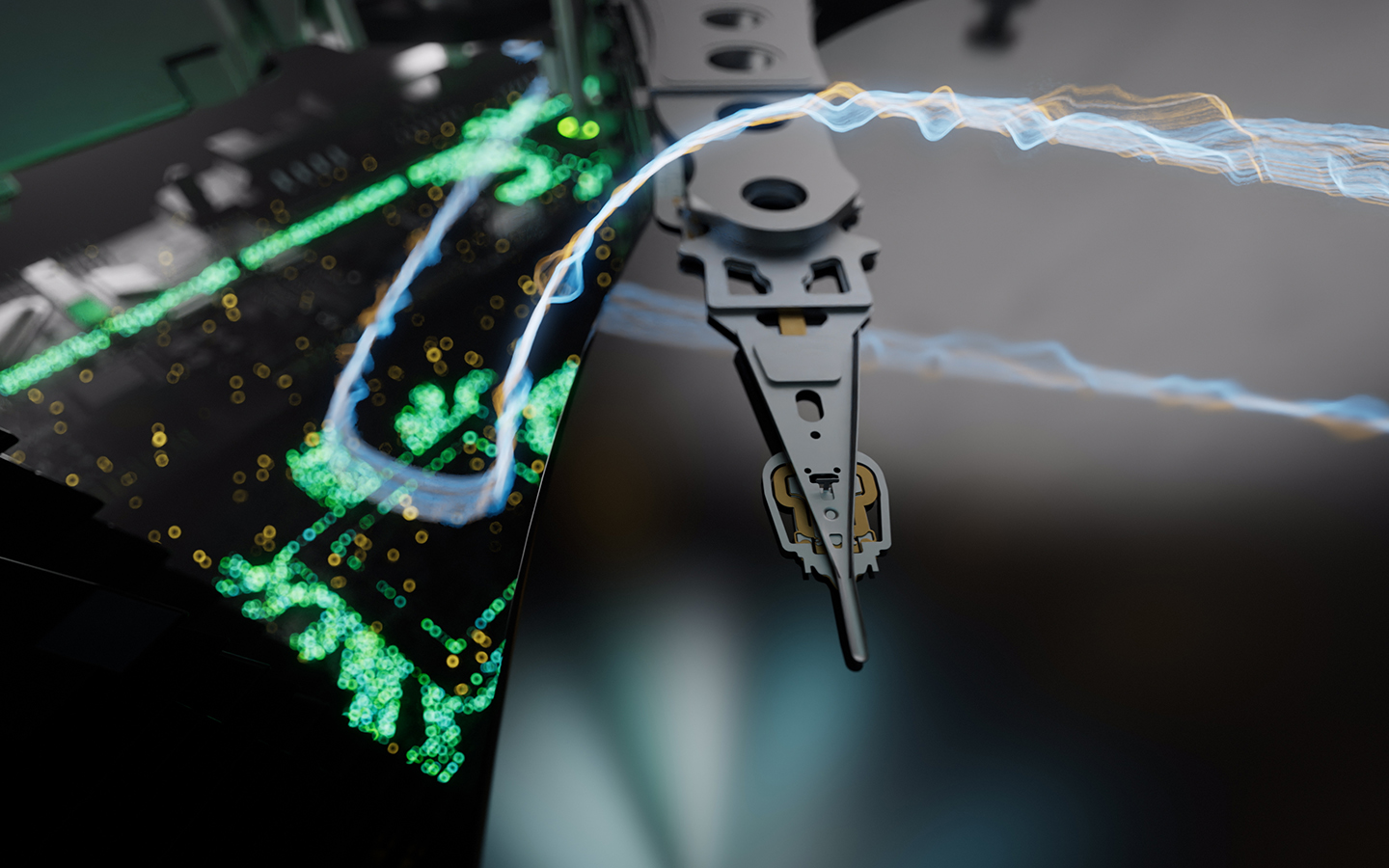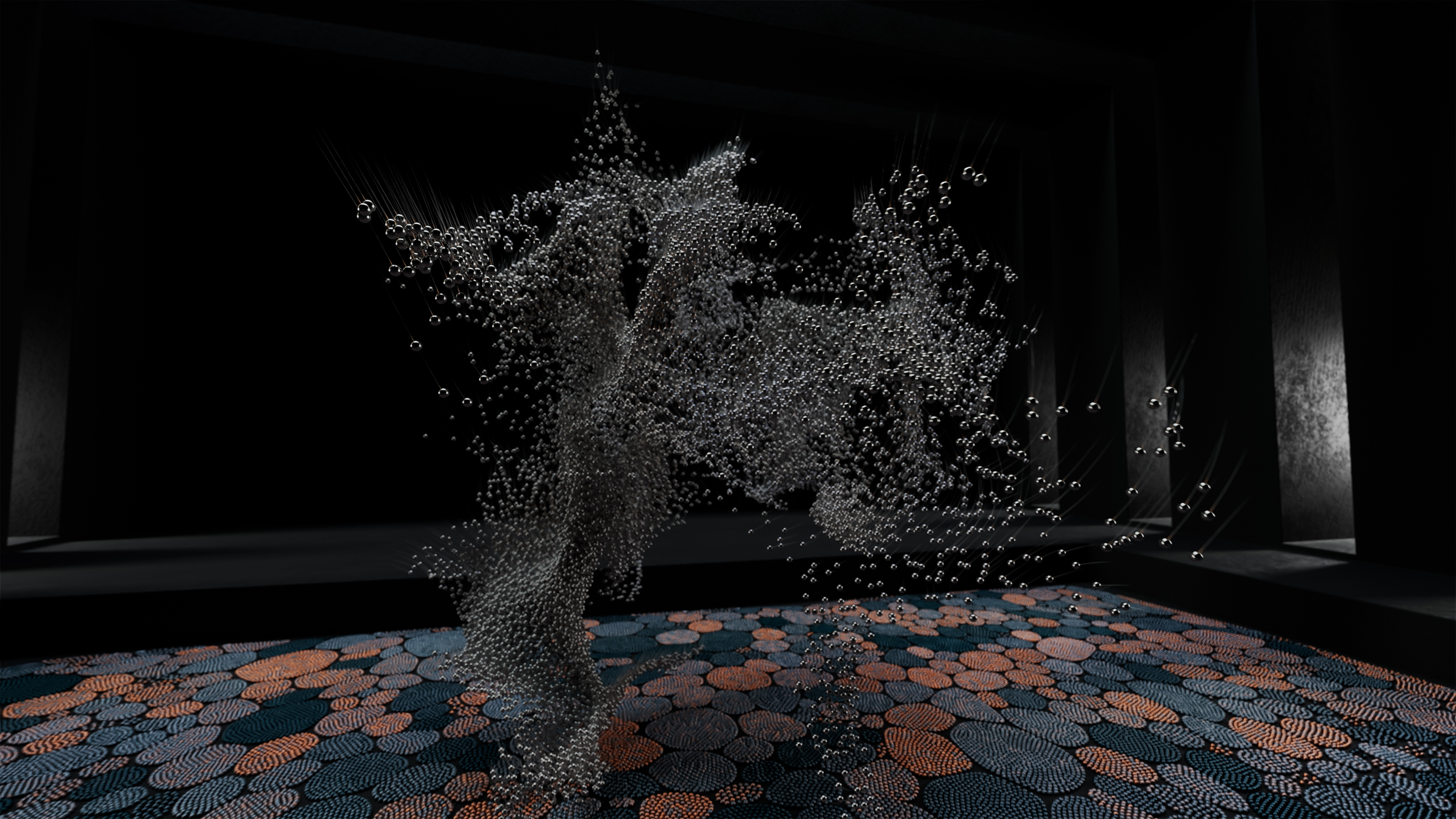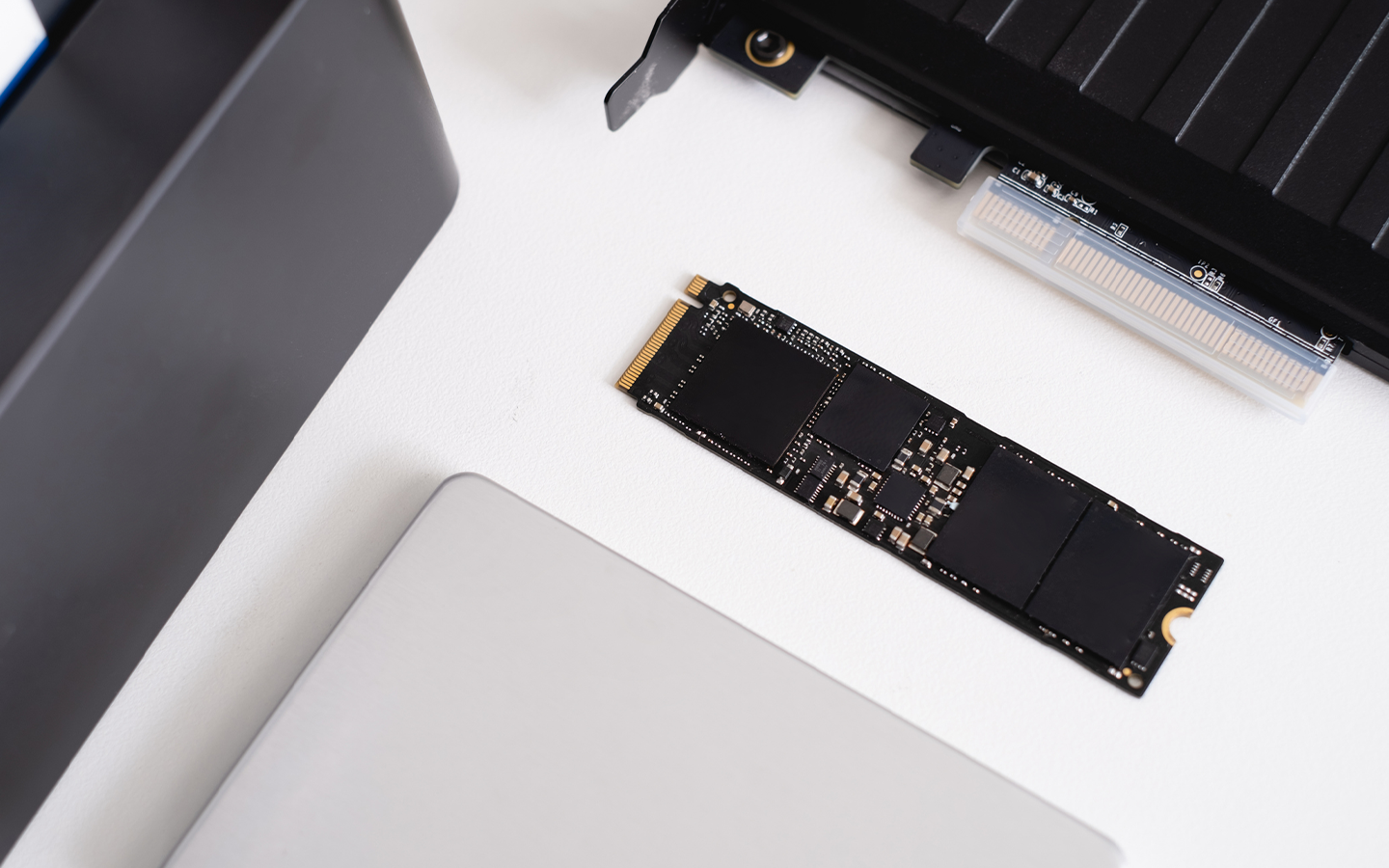The world generates an incomprehensible amount of data every day. This relentless surge of information is the lifeblood of modern innovation, so storing it properly is a major concern for everyone—from individuals to massive enterprises. Among many data storage options, hard disk drives (HDDs) and solid-state drives (SSDs) are doing an incredible job of housing our data. They represent two fundamental technologies that have shaped—and continue to make up—the landscape of digital storage.
While some narratives in the data storage industry suggest a rivalry between hard drives and SSDs, Seagate champions a more nuanced view. HDDs and SSDs each possess distinct strengths, making them suited to different tasks within the datasphere. Far from being adversaries, these technologies are complementary, and together offer a balanced, effective approach to data storage that caters to the diverse needs of today’s digital world. Let’s see how the strategic use of both technologies can ensure companies make the most of data storage capabilities.
How Do Hard Drives Store Data?

Hard drive writing data
Hard drives have been the backbone of data storage for decades, providing a reliable way to preserve vast amounts of information.
Hard Drive Operations
Hard drives magnetize tiny regions on spinning disks to save data. Each platter has a magnetic coating and is split into billions of small sections that can be magnetized separately. Data is saved and retrieved by a magnetic coil (a head that moves over the disk’s surface via a voice coil motor). This head finds data tracks and sections with the help of the drive’s built-in firmware.
Strengths
- Storage Requirements: The full value of HDDs is unmatched when it comes to storing large amounts of data reliably and securely for long periods, excelling in non-transactional bulk data storage like production data repositories, active archives, and backups.
- Cost: Hard drives stand out for their affordability, offering the lowest cost per gigabyte, which makes them ideal for storing huge amounts of data at the lowest cost.
- Expansion and Upgradability: The mature technology behind HDDs allows for straightforward and cost-effective expansion, scalability, and compatibility with existing storage infrastructure.
Potential Limitations
- Performance: While hard drives excel in many scenarios—such as mass data storage—some users opt for flash-based SSD storage for applications that require high performance and speed.
- Durability: When considering deployments where physical shocks and movement are likely, traditional hard drives may not always offer optimal durability. In such cases, Seagate ruggedized hard drives or SSDs are a more fitting choice, providing enhanced resilience to potential damage.
Common Use Cases for Hard Drives
Hard drives are the right solution when capacity and cost-efficiency are paramount. Their primary use cases include:
- Data Centers and Cloud Storage: Hard drives offer an affordable solution for the vast storage needs of data centers and cloud storage providers, enabling efficient management and access to large volumes of data.
- Archival and Backup Solutions: The cost advantage and high capacity of hard drives make them ideal for long-term data retention. Businesses and individuals rely on them to backup critical data and prevent data loss.
Recent Innovations in Hard Drive Technology
The evolution of HDD technology has seen significant advancements aimed at increasing storage density and efficiency. Key developments include:
Heat-Assisted Magnetic Recording

HAMR Technology in action
HAMR technology significantly enhances data density by using a laser to temporarily heat the disk surface during the writing phase. To record bits at higher densities, the magnetic grain size in the recording medium must be reduced, and this can be accomplished by precisely applying heat. As a result, smaller data bits can be written closer together without the risk of magnetic interference, which traditionally limits the density of data storage.
HAMR dramatically expands storage capacity, increasing the areal density—the amount of data that can be stored per square inch of disk space—beyond what is currently possible with conventional recording technologies.
Now, let’s explore Mozaic™ 3+—Seagate’s unique implementation of HAMR technology.
Seagate Mozaic 3+

Seagate Mozaic 3+
Standing at the forefront of HDD innovation, Seagate Mozaic 3+ is a proprietary implementation of HAMR technology. It provides unprecedented storage capacities by significantly increasing areal density, enabling Seagate hard drives to meet future data storage demands with multi-terabyte capabilities.
These innovations represent great strides toward addressing the ever-growing demand for data storage, offering higher capacities and improved efficiency without compromising reliability. Learn more about Mozaic 3+.
Hard Drives Dominate in Data Centers
Hard drives hold the lion’s share in data centers due to their unbeatable cost per terabyte. This dominance is based on price, capacity, power efficiency, performance, reliability, and data retention capabilities.
In environments where virtualization and cloud computing are crucial, the reliability and capacity of HDDs make them an ideal choice for the underlying physical storage.
Despite the performance and latency advantages of SSDs for transactional workloads, hard drives provide the best total cost of ownership (TCO) for most cloud workloads.
According to market intelligence firm IDC, over 90% of exabytes in cloud data centers are stored on hard drives, with the remaining 10% housed on SSDs. This is supported by industry analyst TRENDFOCUS, which stated that more than 1ZB of HDD storage capacity was shipped in just the last year.
How Do SSDs Store Data?
SSDs store data on NAND flash, which is a non-volatile storage technology that doesn’t require power to retain data, making it a cornerstone of this type of drive.

NAND Flash SSD
Operation of NAND Flash
The way data is stored on NAND flash involves a sophisticated arrangement of memory cells, each consisting of a floating-gate transistor. These transistors can trap electrons, which is key to how data is stored. The presence or absence of electrons in the floating gate determines the data stored, typically represented as a 0 or 1. This binary data is the foundation of digital storage. In contrast to hard drives that use magnetic methods to save data on rotating disks, NAND flash operates electronically. This electronic operation allows for quicker data retrieval compared to mechanical drives.
3D NAND
3D NAND technology stacks memory cells vertically in multiple layers. This design significantly increases storage capacity and efficiency compared to traditional 2D (planar) NAND, without taking up additional physical space. The 3D version represents a significant advancement in overcoming the density limitations of NAND flash.
Single-Level Cell (SLC) NAND
Single-Level Cell (SLC) NAND is a type of flash memory that stores one bit of data per cell. This means each cell can exist in one of two states: charged or uncharged, representing a binary 0 or 1. SLC NAND is known for its high reliability, speed, and endurance because fewer bits per cell reduce the likelihood of errors and wear over time. It is typically used in applications where performance and durability are critical, such as enterprise storage solutions, industrial devices, and mission-critical applications. The trade-off, however, is that SLC NAND is more expensive and has lower storage density compared to other NAND types.
Multi-Level Cell (MLC) NAND
Multi-Level Cell (MLC) NAND stores two bits of data per cell. Each cell can be in one of four states, allowing it to represent 00, 01, 10, or 11. This increased data density results in more storage capacity per chip compared to SLC NAND. MLC NAND strikes a balance between cost, performance, and endurance, making it a popular choice for consumer electronics such as solid-state drives (SSDs), USB flash drives, and memory cards. While it offers higher storage capacity at a lower cost per gigabyte, MLC NAND has slower write speeds and shorter lifespan compared to SLC NAND due to the increased number of states each cell must differentiate between.
Triple-Level Cell (TLC) NAND
Triple-Level Cell (TLC) NAND stores three bits of data per cell, which corresponds to eight distinct states. This higher density allows for even greater storage capacity and lower costs compared to both SLC and MLC NAND. TLC NAND is widely used in consumer-grade SSDs, smartphones, and other devices where cost-effectiveness is a primary concern. However, the increased data density results in slower write speeds and reduced endurance. The cells in TLC NAND wear out more quickly due to the higher number of charge levels, leading to a higher probability of data errors over time. Despite these drawbacks, advancements in error correction and wear leveling technologies have made TLC NAND a viable and popular option for many applications.
QLC NAND
Quad-level cell (QLC) NAND stores four bits of data per cell, pushing the boundaries of how much data can be stored in the same physical space. While QLC NAND offers higher storage density and lower cost per gigabyte, it typically comes at the expense of write speeds and endurance compared to other types of NAND.
Advantages of SSDs
- Performance: SSDs, with NAND flash, deliver remarkable data access speeds, enhanced system responsiveness, application loading, and overall performance.
- Durability and Reliability: With no moving parts, SSDs offer durability and reliability, especially in mobile devices or environments where equipment may be subject to shock or physical impact.
Potential Limitations of SSDs
- Cost: NAND flash SSDs have a higher cost per gigabyte, making them less economical for large-volume storage than hard drives.
- Storage Requirements: While SSDs offer rapid access speeds, they typically come at a higher price than hard drives for the same storage capacity, which can limit their use in applications requiring large amounts of data storage.
- Expansion and Upgradability: Although SSDs are flexible in terms of expansion, the higher cost per gigabyte can influence the extent and economics of those upgrades/expansions.
Now that we’ve explored how hard drives and SSD technologies store data, let’s review some emerging trends in the field of data storage and management.
Use of AI for Storage Management
The data storage landscape is rapidly evolving, with several key trends shaping how we store, manage, and think about data. Artificial intelligence (AI) has the potential to transform storage management in several profound ways:
- Automating Routine Tasks: AI can automate standard or scheduled steps, such as data backup, archiving, and retrieval. By analyzing patterns and user behavior, AI systems can plan these tasks at optimal times to minimize disruption and ensure data availability.
- Dynamic Data Allocation: AI algorithms can optimize data allocation across storage resources based on usage patterns, priority levels, and access frequency. This dynamic allocation ensures frequently accessed data is stored on high-performance storage media while less critical data is stored on cost-effective storage tiers, maximizing efficiency and cost-effectiveness.
- Predictive Maintenance: AI-driven predictive analytics can monitor storage systems in real-time, detecting potential hardware failures or performance degradation before they occur. By analyzing historical data and system metrics, AI can identify patterns indicative of imminent issues and proactively initiate maintenance or replacement activities, minimizing downtime and preventing data loss.
- Capacity Planning and Optimization: AI can analyze historical data usage patterns and forecast future storage needs, enabling organizations to plan and optimize storage infrastructure effectively. By accurately predicting storage requirements, companies can avoid over- or under-provisioning storage resources, optimizing costs and resource utilization.
- Data Security and Compliance: AI-powered security solutions can enhance data security by continuously monitoring for unusual access patterns, identifying potential security threats, and enforcing access controls and encryption measures. Additionally, AI can assist organizations in achieving and maintaining regulatory compliance by automating data classification, retention policies, and audit trail generation.
- Intelligent Data Tiering: AI can facilitate intelligent data tiering by automatically moving data between different storage tiers based on its access patterns, relevance, and business value. This dynamic tiering ensures that frequently accessed data is stored on high-performance storage media, while less accessed data is migrated to lower-cost storage tiers, optimizing performance and cost-efficiency.
- Enhanced User Experience: AI-driven storage management solutions can provide personalized user experiences by analyzing user behavior and preferences. By understanding user needs, AI can automatically organize and present data in a way that enhances productivity and user satisfaction.
Explore Seagate Hard Drive and Flash Storage Options
Seagate remains at the forefront of data storage innovation, offering a robust selection of enterprise hard drive and enterprise SSDs tailored to meet diverse enterprise needs. Whether you’re scaling up data centers or enhancing high-speed server capabilities, Seagate has a solution.
- Exos® E and Exos X Enterprise HDDs: Designed for enterprise reliability, the Exos series of enterprise drives is ideal for data centers requiring high durability and voluminous storage capabilities. They ensure performance and reliability in the most demanding data environments.
- Nytro® Enterprise SSDs: The Nytro SSD line of enterprise drives provides cutting-edge flash storage with a focus on speed and efficiency. Perfect for businesses that need fast data access and processing, Nytro drives offer exceptional performance and lower power consumption for various applications.
As the datasphere expands, there’s a critical need for versatile and efficient data storage solutions that work together. Seagate’s innovative HDDs and SSDs demonstrate a commitment to providing robust storage options that meet current and future demands. By leveraging the strengths of HDD and NAND flash technologies, Seagate helps businesses and individuals navigate the complexities of modern data storage, ensuring accessibility, reliability, and sustainability. Learn how by talking to a Seagate expert today.











